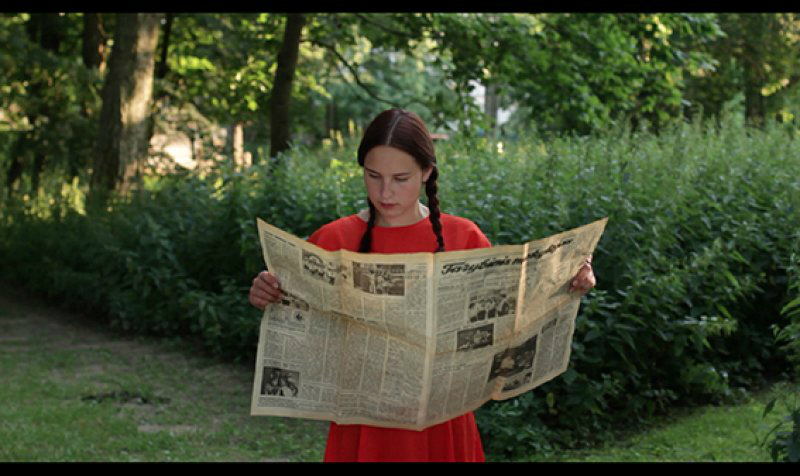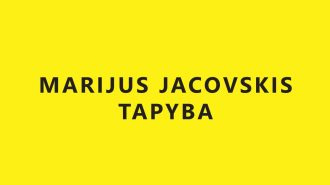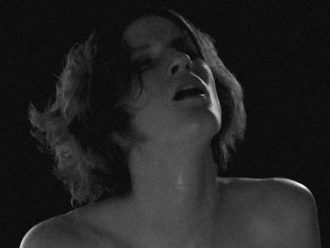The Forgotten Pioneer Movement (TFPM) is semantically grounded in the very last instance of collective experience under socialism: that of joining the mass youth organisations in various socialist countries, just before the fall of the Berlin wall and the dissolution of the socialist project in Europe. This ‘fictional movement’ is endowed with a certain agency – that of ‘revisioning’, or remembering differently, the personal and political heritage of state socialism. With this leap of faith, the organisers of TFPM have put together an ambitious program of performances in public space, seminars, talks and an exhibition throughout October and November 2014.
The seminars were organised around the basic questions that curators Susanne Husse and Ulrike Gerhardt had carved out throughout their preliminary research for the TFPM project: how to establish a vocabulary in order to grapple with the multi-fold experiences of the generation that grew up during the last years of socialism and throughout the decade of so called post-communist transition? What happens when this generation reflects on the ideological changes that shaped public discourse during the transition to capitalism, and what are the semantics of these changes that could be traced through artistic rendering? How can the idea of a ‘preposterous history’((A notion adopted from Mieke Bal, elaborated in: Quoting Caravaggio: Contemporary Art, Preposterous History (1999) )) serve to undermine the dominant history-writing of the post-communist era?
On the methodological side, art historian Ana Bogdanović provided some ground-work in mapping the usage of the generational terminology in the writings of Karl Mannheim and Reinhart Kosellek. Unfortunately, this was the only and too brief an attempt at introducing a sociological perspective to this complex topic throughout the entire seminar program. Bogdanović rather focused her lecture on critical art-writing of recent years, detecting a shift among a younger generation of artists in turning towards the socialist past as ‘artist-archaeologists’. The notion of a ‘historiographic turn’ may however serve better in characterizing certain tastes within the art-institutional and market-driven want for somewhat intelligible content, reflecting a new taste of the (western) public for ‘eastern’/post-soviet subjectivity as can be seen for example in a series of so called ‘Balkan exhibitions’ at the beginning of the millenium.
A number of seminar contributions shed light on the heritage of socialism as emancipatory topos of identification. This might mainly pertain to the first seminar-day organised by the Zagreb-based curatorial collective [blok], titled ‘BETWEEN WORLDS. Everybody talks about the weather. We don’t.’ – making reference to an infamous 1968 poster of the West-German socialist student union and title for a collection of essays by Ulrike Meinhof. In their choice of presentations, bloks selection spans a wide range of leftist heritage beyond geopolitical and chronological divides: from the guided history-walk through Wedding (a historically ‘red’ Berlin working-class district) with artist Kristina Leko, through to Gal Kirns invocation of a neglected cultural idiom of Yugoslav history – the figure of the partisan. Under Tito, the commemoration of anti-fascist partisan struggle during WW2 had served as emancipatory ‘origin myth’, perpetuated by heroic representations in Yugoslav cinema and in public monuments. In his presentation Kirn thus repositions this figure of the partisan as ‘political pioneer’, rather than an out-dated ideological memorabilia. Similarly, the video-essay Newsreel 55, presented in an evening screening during the first seminar-day, seeks to question the public but also personal politics of remembering, in continuously re-inscribing the words of the murdered partisan Slava Klavora into the screen. Connecting auto-biographical elements to focal and still painfully unresolved issues of (post-)Yugoslav history, Nika Autor examines the home-video footage of her own initiation to the pioneer organisation: “The real image of the past whooshes by. Shattered images that not even memory or celluloid tape can wrest from oblivion.”((Newsreel 55 is a collaborative work by newsreel front (Nika Autor, Marko Bratina, Ciril Oberstar, Jurij Meden). For more information see: http://obzorniska-fronta.si/newsreel.html))
What’s more, the selected contributions suggest the continuation of emancipatory struggle right into our present, where leftist heritage provides a backdrop for the formation of political consciousness within a young activist generation.
Speakers originating from the Baltic region presented more ambivalent positions with regard to a rediscovery of ‘socialist heritage’. The presentation by curators Ieva Astahovska & Inga Lāce on their recent exhibition and publication projects gave insight into their dealing with this ambivalence, by way of curating caleidoscopic artistic or theoretical positions of “a generation that had only heard about the Soviet past by word of mouth”. Neither presenting a politically vested point of origin for their curatorial interest in the Soviet past, nor retreating to a professionally grounded ‘neutrality’, Astahovska and Lāce put biographical curiosity as a starting point for a search for post-Soviet (Latvian) identity, though confusingly relating it to todays problematic self-positioning in the face of the violent conflict in the Ukraine and Russias role in it.
A remarkable contribution was that of Agnė Bagdžiūnaitė of the group ŽemAt, who in her talk ‘They don‘t know how to say it anymore. Notes on collectivity and collectivism’ sketched out the social ruptures in rural Lithuania during post-communist transition, describing the development from dissolution of the agricultural kolkhos towards the rise of mafia clan structures dominating daily life and business in large parts of Lithuanias impoverished agricultural areas in the 90ies. Circumventing common-place gangster-clichés, Bagdžiūnaitė describes the systemic devastation and marginalization of rural society as a precondition for the emergence of violence and organised crime.
I would like to underline the importance of this presentation, as it was among the few instances within the seminar program where economic and social effects of the implementation of capitalism where addressed, and where post-communist transition was not merely presented as an opaque era of amnesia and loss.
But it was not only these socio-economic aspects that have been left under-discussed in the seminar program. It was not simply the liberalising effect of Perestrojka, but also the rise of nationalism, the quest for ethno-national identity that served as a push-factor for the breaking apart of the ‘Eastern Block’, that led to the Balkan war, played an important role in the German unification and the abandoning of a possible ‘Third Way’ of socialism, and that lies also at the heart of current violence in the Ukraine. Again, it was but one exhibition contribution by ŽemAt, a video documentation titled ‘Imagining the Absence’, that subtly addressed such topics. In the framework of a theatre workshop, the group had worked with actors and young participants (who were themselves soon-to-become high-school teachers), discussing the Lithuanian educational reform movement Sąjūdis of the mid- to late 80ies. The workshop included performative sequences and a symbolic layer referring to folklore and national identity, without too explicitly pointing out the nationalist strata within the progressive Sąjūdis movement.

Eglė Ambrasaitė, Imagining the Absence, video still, 2014 ©Museum Aikas Zado Live
In closing the circle, I would like to revert back to the figure of the young pioneer, and remind us of a little detail that has been maybe the most forgotten among all forgotten things about them: The predecessor of the East-German youth-organization FDJ (Free German Youth) was already formed during WW2 by communist and Jewish German youths exiled in Britain. At the beginning of the FDJ thus stands a self-organised anti-fascist youth alliance that was subsequently incorporated in the project of building up a socialist society in the soviet occupied zone.
Having lost this knowledge, what formative power can possibly be ascribed to such distant memory of the last pioneer generation? Isn`t it but a fading image, devoid of any substantial experience of livelihood in a socialist state and its idealistic political foundation? What exactly is it that needs to be remembered, or painstakingly reassembled from the scattered histories of various socialisms, in order to set a whole movement into (symbolic) motion as the project title suggests? These questions still remain unanswered.

Gal Kirn, ‘The figure of partisan: from the Yugoslav revolution to the memory on revolution’, The Forgotten Pioneer Movement at District Berlin 2014, Photograph by Louis Haugh

Ieva Astahovska & Inga Lāce, ‚Revisiting Footnotes. Echoes of the past translated into present’, The Forgotten Pioneer Movement at District Berlin 2014, Photograph by Louis Haugh

Ana Bogdanović, ‚Generation as a framework for historicizing the socialist experience in contemporary art’, The Forgotten Pioneer Movement at District Berlin 2014, Photograph by Louis Haugh
























